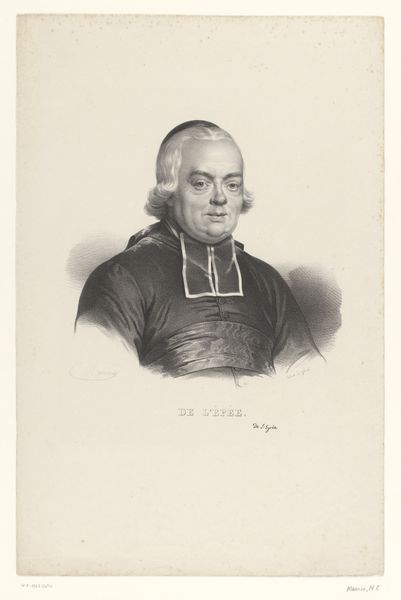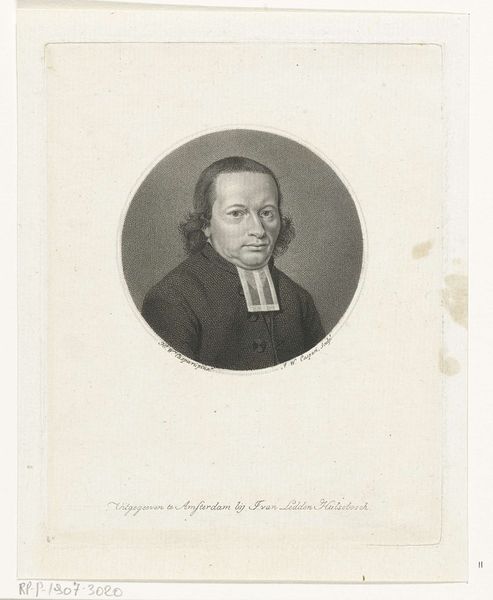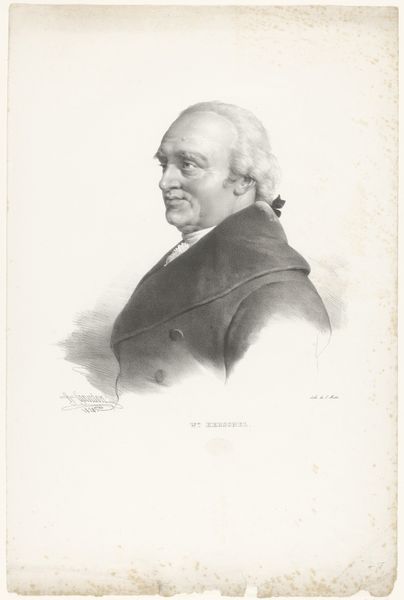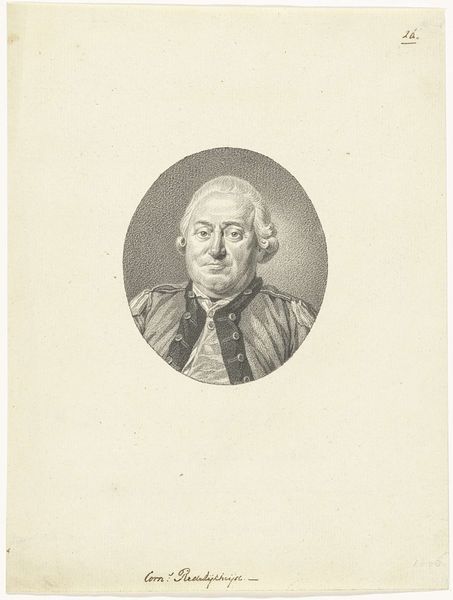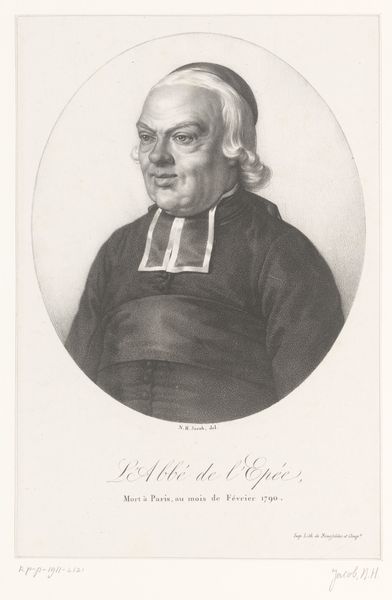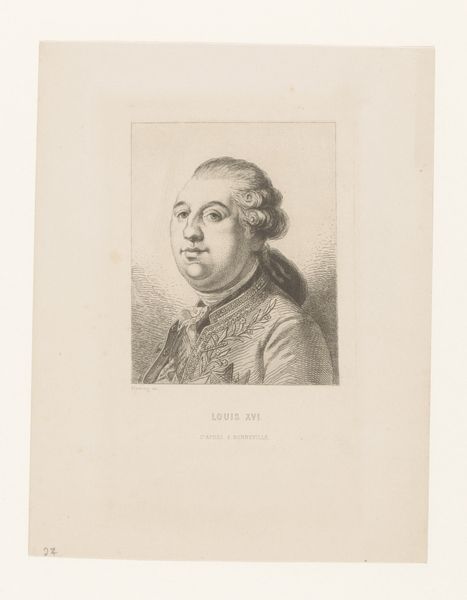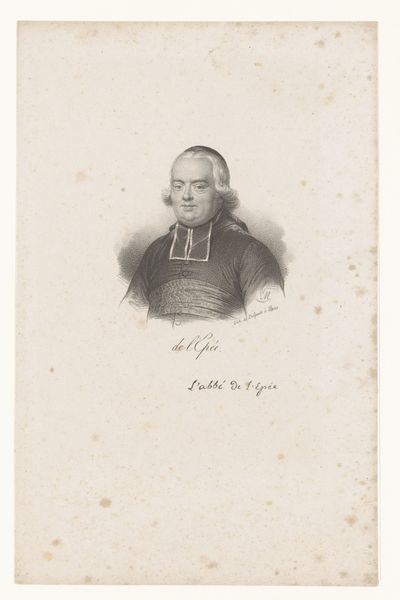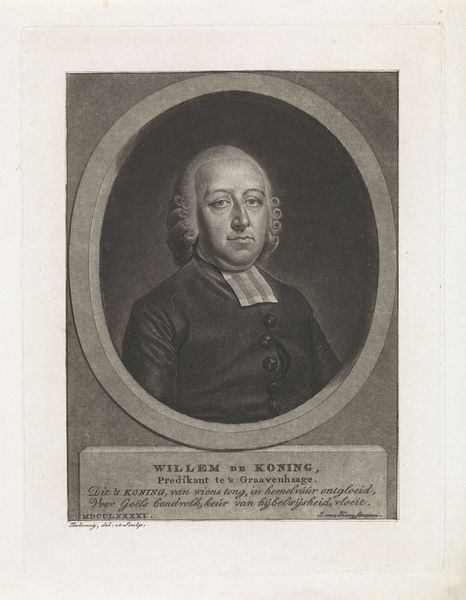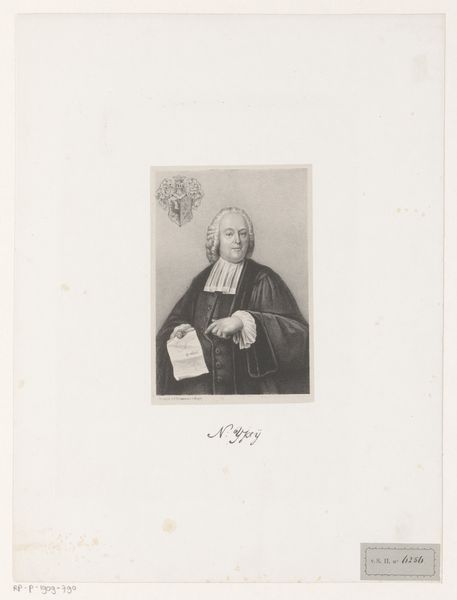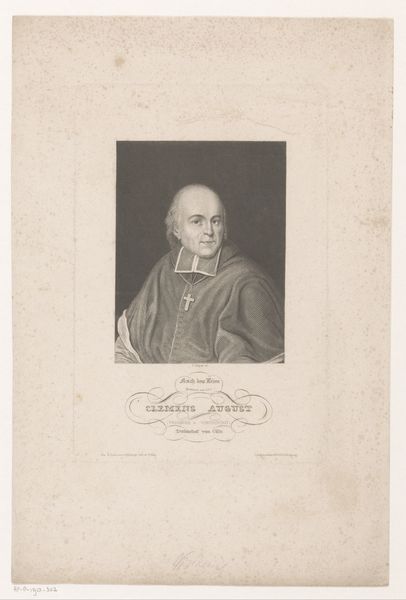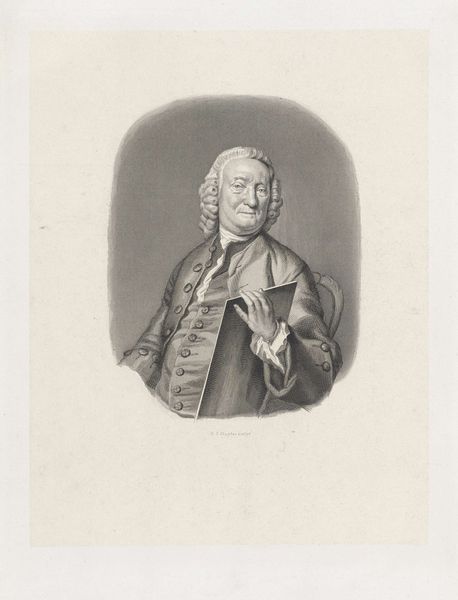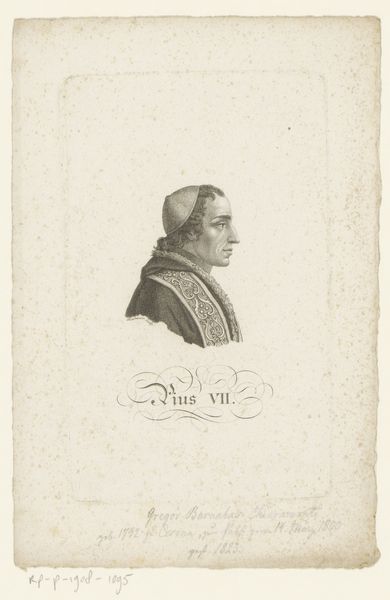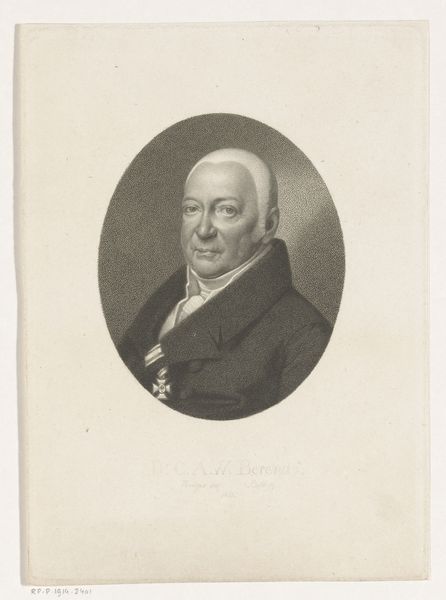
drawing, print, etching, paper, engraving
#
portrait
#
pencil drawn
#
drawing
#
neoclacissism
#
light pencil work
# print
#
etching
#
old engraving style
#
figuration
#
paper
#
pencil drawing
#
line
#
academic-art
#
engraving
Dimensions: height 294 mm, width 190 mm
Copyright: Rijks Museum: Open Domain
Antoine Maurin created this portrait of Charles-Michel de l'Epée using lithography, a printmaking process that democratized image production in the 19th century. Lithography hinges on the simple principle that oil and water don't mix. The artist draws an image with a greasy crayon onto a flat stone or metal plate, which is then treated to accept ink only where the crayon has marked. Paper is pressed against the surface, transferring the image. This process allows for relatively quick and inexpensive reproduction, fueling the growth of mass media. Consider the implications of this shift. While a unique painted portrait was a luxury for the wealthy, lithography enabled the wider dissemination of images, shaping public opinion and cultural trends. Maurin's choice of this medium speaks to the changing landscape of art and its relationship to society, making portraits like this accessible to a broader audience. This reminds us that the materials and methods used to create art are never neutral; they carry social and political meaning.
Comments
No comments
Be the first to comment and join the conversation on the ultimate creative platform.
